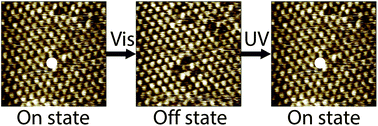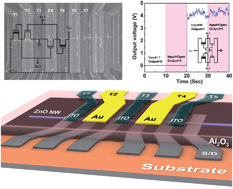This month sees the following articles in Nanoscale that are in the top ten most accessed for March:
Nanostructured carbon–metal oxide composite electrodes for supercapacitors: a review
Mingjia Zhi, Chengcheng Xiang, Jiangtian Li, Ming Li and Nianqiang Wu
Nanoscale, 2013,5, 72-88
DOI: 10.1039/C2NR32040A
A review of fabrication and applications of carbon nanotube film-based flexible electronics
Steve Park, Michael Vosguerichian and Zhenan Bao
Nanoscale, 2013,5, 1727-1752
DOI: 10.1039/C3NR33560G
Lithium/sulfur batteries with high specific energy: old challenges and new opportunities
Min-Kyu Song, Elton J. Cairns and Yuegang Zhang
Nanoscale, 2013,5, 2186-2204
DOI: 10.1039/C2NR33044J
Graphene synthesis: relationship to applications
Rebecca S. Edwards and Karl S. Coleman
Nanoscale, 2013,5, 38-51
DOI: 10.1039/C2NR32629A
Recent progress in graphene-based nanomaterials as advanced electrocatalysts towards oxygen reduction reaction
Chengzhou Zhu and Shaojun Dong
Nanoscale, 2013,5, 1753-1767
DOI: 10.1039/C2NR33839D
Recent advances in the efficient reduction of graphene oxide and its application as energy storage electrode materials
Tapas Kuila, Ananta Kumar Mishra, Partha Khanra, Nam Hoon Kim and Joong Hee Lee
Nanoscale, 2013,5, 52-71
DOI: 10.1039/C2NR32703A
Graphene-related nanomaterials: tuning properties by functionalization
Qing Tang, Zhen Zhou and Zhongfang Chen
Nanoscale, 2013, Advance Article
DOI: 10.1039/C3NR33218G
Graphene transfer: key for applications
Junmo Kang, Dolly Shin, Sukang Bae and Byung Hee Hong
Nanoscale, 2012,4, 5527-5537
DOI: 10.1039/C2NR31317K
Synthesis of Fe3O4@C core–shell nanorings and their enhanced electrochemical performance for lithium-ion batteries
Lili Wang, Jianwen Liang, Yongchun Zhu, Tao Mei, Xing Zhang, Qing Yang and Yitai Qian
Nanoscale, 2013,5, 3627-3631
DOI: 10.1039/C3NR00353A
All-solid-state hybrid solar cells based on a new organometal halide perovskite sensitizer and one-dimensional TiO2 nanowire arrays
Jianhang Qiu, Yongcai Qiu, Keyou Yan, Min Zhong, Cheng Mu, He Yan and Shihe Yang
Nanoscale, 2013,5, 3245-3248
DOI: 10.1039/C3NR00218G
Why not take a look at the articles today and blog your thoughts and comments below.
Fancy submitting an article to Nanoscale? Then why not submit to us today!
Comments Off on Top 10 most-read Nanoscale articles in March
 We are delighted to welcome Dr Serena Corr as a new Associate Editor for Nanoscale.
We are delighted to welcome Dr Serena Corr as a new Associate Editor for Nanoscale.











 Scientists working at
Scientists working at  Scientists from Taiwan and Germany report a strong magnetic enhancement in self-assembled multiferroic-ferrimagnetic nanostructures in
Scientists from Taiwan and Germany report a strong magnetic enhancement in self-assembled multiferroic-ferrimagnetic nanostructures in